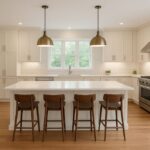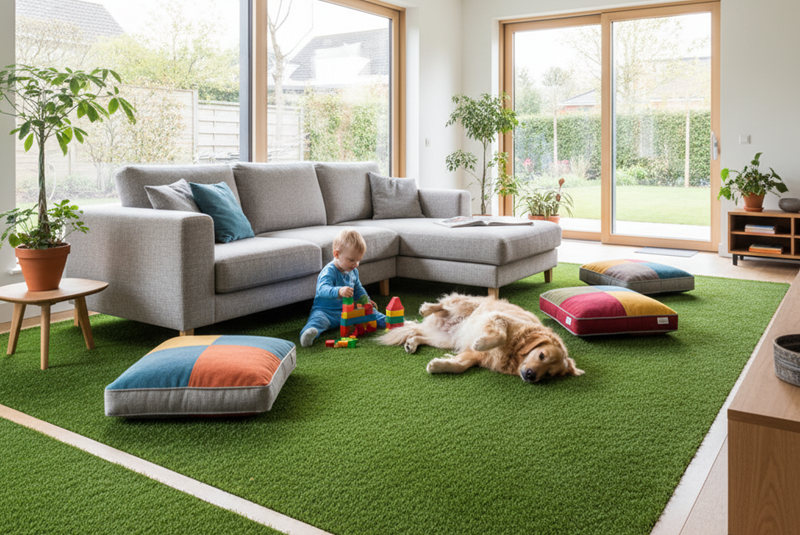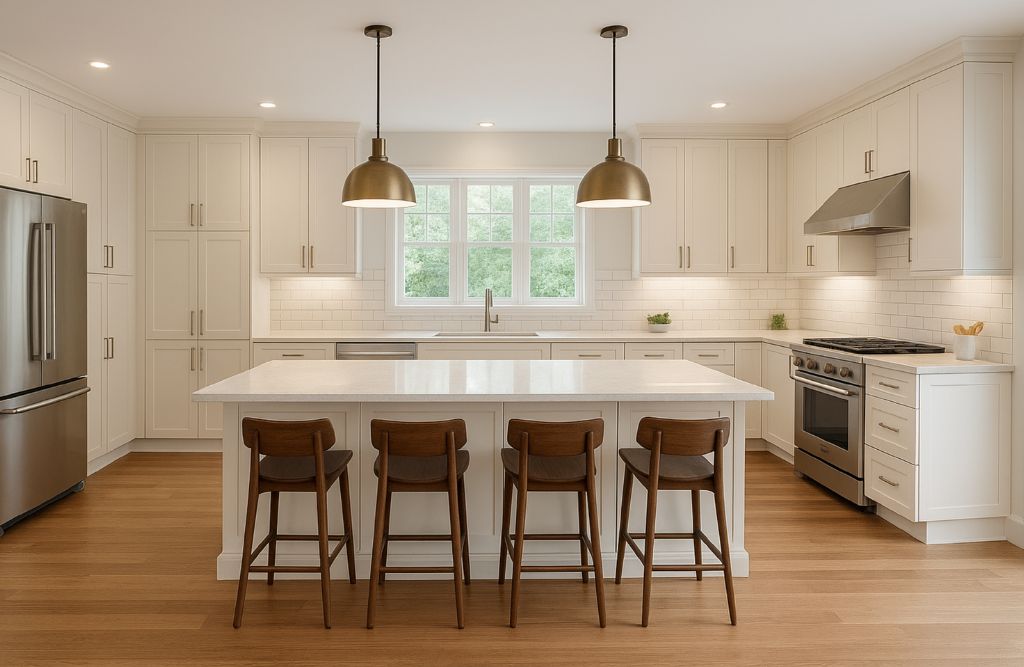Learn how to plan a new deck for your home, including the essential considerations and potential pitfalls.
Key things to consider:
- Check local permits and codes before building.
- Plan deck size, layout for functionality and aesthetics.
- Choose decking material wisely for style and maintenance.
- Consider house architecture and color scheme for design.
- Budget costs, research materials, and hidden expenses well.
Understanding Deck Permits and Building Codes
First things first, before you even think about picking out deck furniture, you need to tackle the red tape. Local governments often have specific rules in place regarding the construction of new decks. Ensure you check with your local municipality for exact regulations.
Permits are usually required. They help ensure your deck is safe and up to code. Failing to get a permit could mean having to dismantle your hard work—talk about a buzzkill.
Building codes vary by location but often cover details like deck height, railing requirements, and stair construction. If your deck is more than 30 inches above grade, you’ll probably need a railing.
Don’t forget to contact your utility companies before digging. Nobody wants an unintended water feature courtesy of a damaged pipe.
Finally, check your property lines. Your neighbor might be cool about borrowing a cup of sugar, but they may not appreciate your deck encroaching on their yard.
Determining Deck Size and Layout
Think Goldilocks when envisioning your deck: not too big, not too small, just right. You need to strike a balance between functionality and fitting your yard.
First, consider how you’ll use the deck. Hosting large BBQs? You might need more space. Love quiet mornings with a book? A cozier deck will do. Chart out the purpose.
Measure your available outdoor space. Factor in house exits, walkways, and garden beds. Remember, your deck should complement your home’s dimensions, not dwarf it or look like an afterthought. Use a calculator to figure out how many decking boards you will need.
Account for seating and activity zones. Dining areas require about 12×14 feet, whereas a simple sitting area needs just 10×10 feet. Paths between zones should be at least 3 feet wide.
Don’t forget about the flow. How will people move between the house and yard? Ensure there’s a smooth transition and ample room for everyone to move around freely.
Choosing Decking Materials
For a deck that’s both stylish and sturdy, material choice is key. You’ve got options, my friend, and each one brings its own set of benefits.
Pressure-treated lumber is the classic pick. It’s budget-friendly, resistant to bugs, and can be painted any color you fancy. Just remember, it may require more maintenance than the high-tech stuff.
Speaking of high-tech, composite decking is like the smartphone of deck materials. Made from a mix of wood fibers and plastic, it resists splinters, warping, and fading. It’s low-maintenance but can be a bit pricier up front.
If you’re dreaming of a zen-like outdoor space, cedar or redwood might call your name. These woods are naturally beautiful and resistant to decay. They can cost a bit more but offer a luxurious feel.
Lastly, there’s PVC decking. Imagine a deck that laughs in the face of moisture. PVC won’t rot, splinter, or stain and requires almost no upkeep. However, its initial cost can make your wallet wince a bit.
Mix and match based on your style, budget, and the amount of elbow grease you’re willing to invest.
Considering Deck Style and Color Schemes
Finding the right deck style and color scheme is like choosing the perfect outfit for your home. You want it to make a statement, but also to feel just right.
First, think about the architecture of your house. A modern home might look sharp with sleek metal railings and minimalist lines, while a rustic cottage could use a more rustic timber look.
Color is key too. Darker shades like walnut or charcoal can hide dirt (handy if you’ve got kids or pets running wild), while lighter tones make small spaces feel more open.
Don’t forget the ambiance. Adding string lights, colorful planters, and comfy furniture can transform your deck into a personal paradise. And, of course, always consult with your designated household fashionista—better safe than stylishly sorry!
Calculating the Costs Involved
First up, you need a budget that won’t make your wallet weep. Start with the essentials: permits, materials, and labor costs. Keep in mind, finer details like railings and fancy staircases can bump up the price.
Begin with good ol’ research. Check the price of different wood types or composite materials. Spoiler alert: composite materials keep that new deck look without demanding to be stained every summer.
Next, don’t forget the hidden costs. Fasteners, sealants, and unexpected mishaps—think of them as your deck’s undercover agents. Always pad your budget for these sneaky expenses; they love making surprise appearances.
Then, consider professional help. Contractors aren’t cheap, but they save you time and potential future headaches. Get multiple quotes. Think of this as your mini talent show for deck builders.
Lastly, calculate ongoing maintenance. Wood needs regular pampering; composite just needs a loving soap-water scrub. This saves you from thinking, “What? More expenses?” every spring.
Knowledge is power. And in this case, it’s also a well-budgeted deck.
Evaluating Different Deck Plans and Design Tools
There are several ways to find the perfect deck plans and design tools that suit your needs. First up, consider handy online tools. Websites like SketchUp and Home Designer Suite can help you visualize your space. With these, you can play around with different layouts and even see a 3D model.
For the more old-school folks, printed deck plans can be just as effective. Many home improvement stores offer books full of ready-to-build plans, giving you solid guidelines to follow.
Next, think about consulting a professional. Architects and designers have access to advanced design software and can offer a custom solution if your space has unique challenges.
Finally, some DIY enthusiasts might find joy crafting a plan from scratch. Graph paper and a ruler can go a long way in drawing up a basic blueprint. Just don’t forget, even Picasso started with a pencil sketch before splashing paint on the canvas.
Remember, a well-planned deck isn’t just a platform; it’s an outdoor oasis waiting to happen. Choose your tools wisely, and may the blueprint be with you!
Deciding Between DIY or Hiring a Contractor
Taking on a deck project yourself can be incredibly rewarding, especially if you’re the type who believes any day spent with power tools is a day well spent. However, building a deck is no small task. Here are a few points to mull over:
First, assess your skill level. Have you been known to tackle ambitious DIY projects with aplomb, or does assembling IKEA furniture send shivers down your spine?
Next, consider time. DIY saves cash but often takes longer. Are you okay with a drawn-out project, or do you need this deck up and running for that barbecue you promised the in-laws next month?
Materials are another headache. A contractor can often get them for less—and knows a straight board from a warped one.
Finally, safety is no joke. A poorly constructed deck can be quite the liability. Make sure you’re up for the challenge and have a meticulous eye for detail.
On the flip side, hiring a contractor means the job’s typically done faster and meets local building codes, leaving you to enjoy your morning coffee while someone else gets sawdust in their hair. Just be sure to check references and avoid any contractor who seems as shady as an oak tree at high noon.











